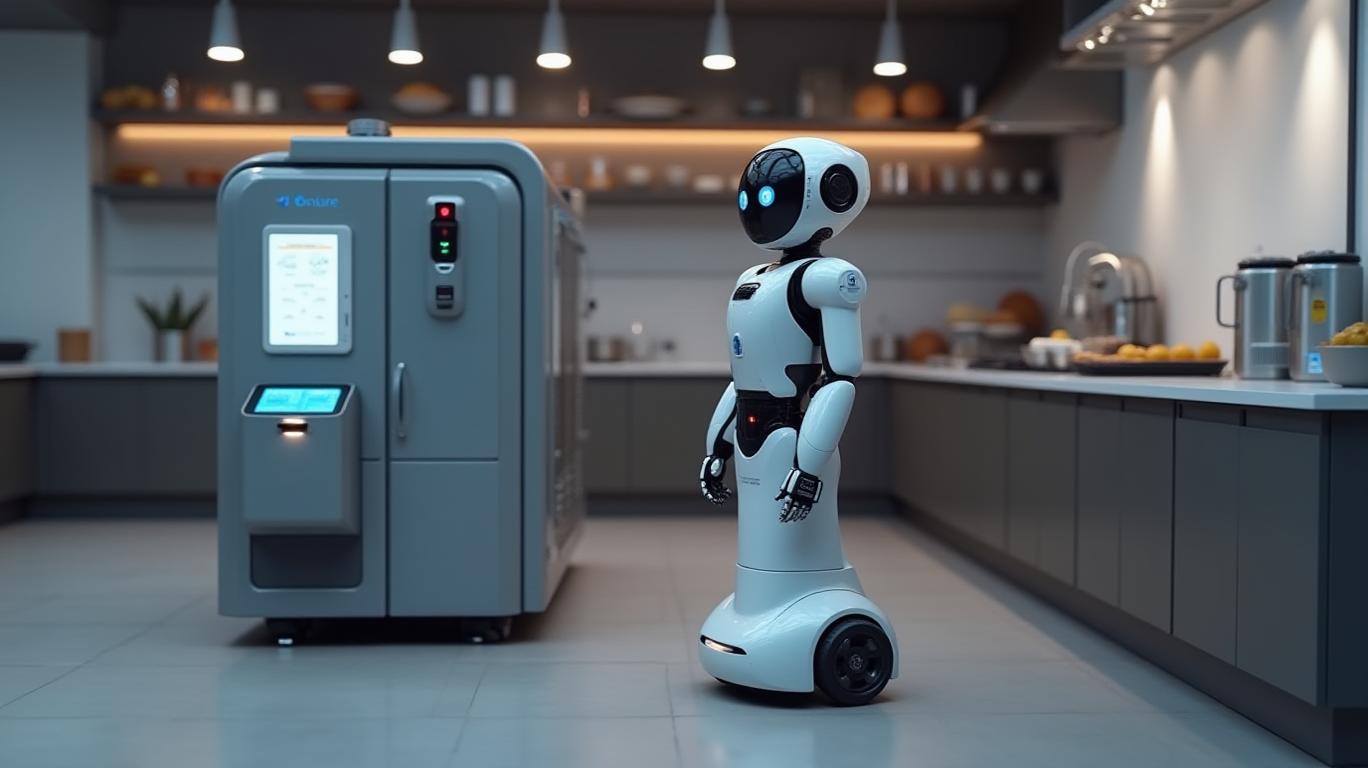Serve Robotics: A Robotics Revolution at Inflection Point – Why Now is the Time to Invest
The robotics revolution is no longer science fiction—it’s here, and Serve Robotics (NASDAQ: SERV) stands at the epicenter of its acceleration. Recent analyst upgrades, a transformative acquisition, and a partnership with Uber Eats have ignited a surge in investor interest. But beyond the short-term catalysts, the company’s strategic vision and execution position it as a long-term growth play in a $146 billion autonomous delivery market. Let’s dissect why
is primed to dominate this space and why investors should act now.The Catalysts: Q3 Results, Vebu, and Uber Eats – A Perfect Storm of Momentum
Serve’s Q3 2024 results underscore its transition from a nascent innovator to a scaling enterprise. Revenue surged 254% year-over-year to $0.22 million, while operational metrics like daily active robots (up 97% to 59) and daily supply hours (up 108% to 465) reflect exponential growth in its delivery network. But the real magic lies in its strategic moves:
1. The Vebu Acquisition: Expanding into the $12B Restaurant Automation Market
Serve’s all-stock acquisition of Vebu, Inc., which produces the Autocado avocado-processing robot, opens a new revenue stream in back-of-house automation. This move isn’t just about diversification—it’s about owning the kitchen of the future. Restaurants spend billions on labor and efficiency, and Autocado’s ability to automate a critical, time-intensive task (avocado preparation) positions Serve to capitalize on a $12 billion global market.

The synergy is clear: Serve’s existing delivery robots handle the front-of-house (customer deliveries), while Vebu’s tech tackles the back-of-house. This full-stack automation play creates a defensible moat against competitors and unlocks cross-selling opportunities with restaurant partners like Shake Shack.
2. The Uber Eats Partnership: Scaling to 2,000 Robots by 2025
Serve’s agreement with Uber Eats to deploy 2,000 robots by year-end 2025 is a near-term catalyst with massive implications. As of Q3, manufacturing and rollout are ahead of schedule, and with Uber’s vast network of 1.3 million global restaurants, this partnership could catapult Serve into mainstream adoption.
The scalability here is staggering. Each robot deployed reduces labor costs for restaurants and increases delivery efficiency, creating a flywheel effect where more robots mean more revenue and operational leverage.
Why Serve Beats Dividend Stalwarts Like PG/PM in This Decade
Critics may argue that Serve’s valuation (currently $259 million post-January 2025 capital raise) is too high for a pre-profit company. But comparing it to dividend stalwarts like Procter & Gamble (PG) or Philip Morris (PM) misses the point. These legacy firms thrive on stable, mature markets, while Serve operates in hyper-growth sectors where market share gains and first-mover advantages are everything. Consider:
- PG’s 2023 revenue growth: 6% (driven by pricing, not innovation).
- Serve’s 2024 revenue growth: 773% year-over-year (from $0.16M to $1.8M).
Serve is in a decade-long secular tailwind of automation adoption. The global robotics market is projected to grow at a 15% CAGR, fueled by labor shortages, rising operational costs, and consumer demand for efficiency. By contrast, PG and PM are playing in mature markets with single-digit growth ceilings.
Addressing Valuation Concerns: Cash, Scale, and Margin Potential
Serve’s $50.9 million cash balance (post-Q3) and its new ATM financing program provide ample liquidity to fund expansion. While the company reported a Q3 net loss of $7.99 million, this is typical for high-growth tech firms scaling infrastructure. Key metrics to watch:
- Gross margin improvement: The gross loss narrowed to -70% in Q3 from -88% in 2023, indicating cost control.
- Operational leverage: As robots scale (targeting 2,000 units), fixed costs (R&D, manufacturing) will spread over a larger revenue base.
Compare this to legacy firms like PG, which trades at 24x forward earnings but has limited upside. Serve’s $259M valuation is a fraction of its addressable market, and its stock has already rallied 300% since late 2023 on analyst upgrades—proof that the market sees its potential.
Final Call: Serve Robotics – A Must-Own Robotics Play
The thesis is simple: Serve is building the infrastructure of the automated economy. Its Q3 results, Vebu synergies, and Uber Eats partnership create a trifecta of growth catalysts. While PG and PM offer stability, they lack the transformative upside Serve commands in a robotics-driven world.
Investment Recommendation:
- Buy now at current levels. The stock’s 50-day moving average (check below) shows upward momentum, and its valuation is still reasonable against its growth trajectory.
- Watch for:
- Dallas-Fort Worth market entry (Q2 2025).
- Vebu’s Autocado deployment timelines.
- Uber Eats robot rollout progress.
Conclusion
Serve Robotics isn’t just another robotics firm—it’s a platform play in two booming sectors: delivery automation and kitchen efficiency. With a war chest of cash, partnerships with industry giants, and a visionary acquisition, the company is primed to become the Microsoft of its era. For investors seeking exponential growth in the 2020s, Serve is not a “maybe”—it’s a must-have. Act now before the market fully realizes its potential.

Comments
No comments yet